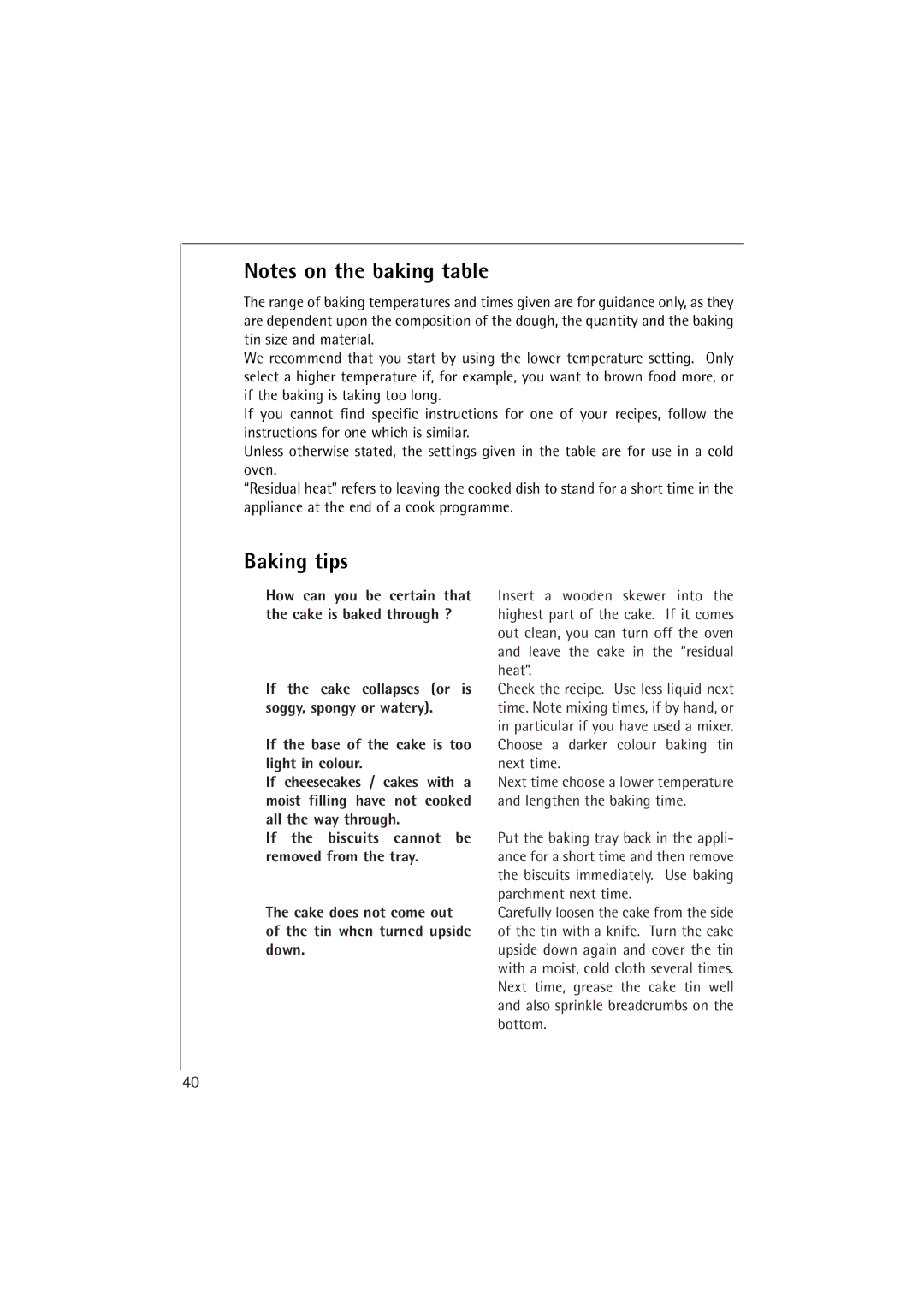
Notes on the baking table
The range of baking temperatures and times given are for guidance only, as they are dependent upon the composition of the dough, the quantity and the baking tin size and material.
We recommend that you start by using the lower temperature setting. Only select a higher temperature if, for example, you want to brown food more, or if the baking is taking too long.
If you cannot find specific instructions for one of your recipes, follow the instructions for one which is similar.
Unless otherwise stated, the settings given in the table are for use in a cold oven.
“Residual heat” refers to leaving the cooked dish to stand for a short time in the appliance at the end of a cook programme.
Baking tips
How can you be certain that the cake is baked through ?
If the cake collapses (or is soggy, spongy or watery).
If the base of the cake is too light in colour.
If cheesecakes / cakes with a moist filling have not cooked all the way through.
If the biscuits cannot be removed from the tray.
The cake does not come out of the tin when turned upside down.
Insert a wooden skewer into the highest part of the cake. If it comes out clean, you can turn off the oven and leave the cake in the “residual heat”.
Check the recipe. Use less liquid next time. Note mixing times, if by hand, or in particular if you have used a mixer. Choose a darker colour baking tin next time.
Next time choose a lower temperature and lengthen the baking time.
Put the baking tray back in the appli- ance for a short time and then remove the biscuits immediately. Use baking parchment next time.
Carefully loosen the cake from the side of the tin with a knife. Turn the cake upside down again and cover the tin with a moist, cold cloth several times. Next time, grease the cake tin well and also sprinkle breadcrumbs on the bottom.
40
